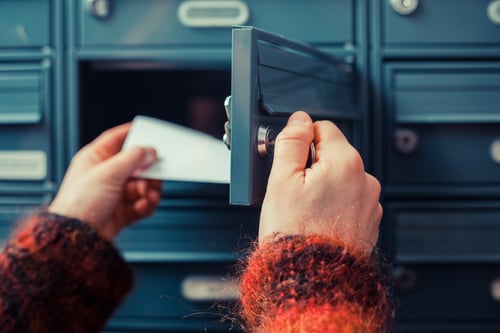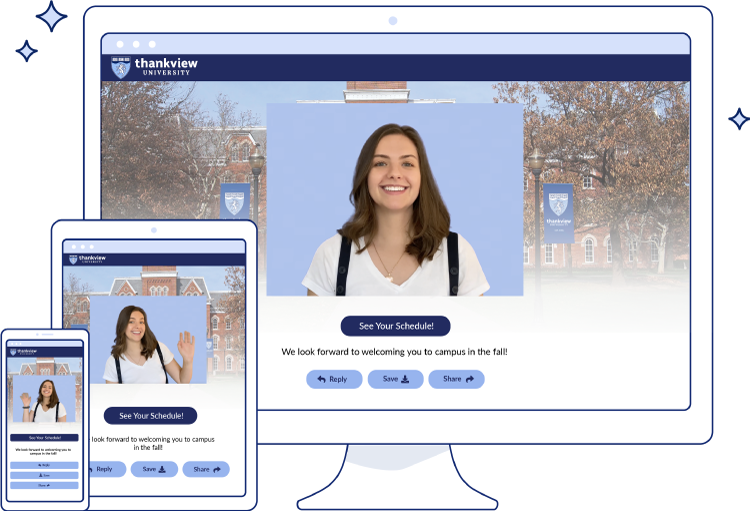How To Send a Donation Request Letter That Gets Results
If you’re involved with a nonprofit other charitable organization, odds are you’ve had some first-hand experience with fundraising letters. Writing a successful donation request letter is not easy. It takes careful planning and thought.
Maybe you’ve found yourself wondering how to send a compelling appeal. Perhaps you want to make your request stand out in the crowd. Take a look through some easy, actionable tips for sending fundraising appeals and sponsorship requests that get noticed and acted on by potential donors.
What Are Donation Request Letters?
At its core, a donation request letter is a piece of communication outlining your mission and efforts to donors and encouraging them to join the financial support efforts.
Donation request letters might come in the form of a formal letter sent through the mail or an email. Some nonprofit organizations opt to include their appeal in pamphlets. If you’re interested in really standing out in the crowd of donation requests, you can opt to try a donation request letter in the form of an engaging video. In fact, according to a study by Google, 57% of individuals who watch a fundraising video will contribute to that cause.
While your nonprofit organization should send out a unique request, the basics of a quality donation request letter are generally the same no matter the ask.
Why Donation Letters Are Important
Donation letters give your fundraising efforts a sense of legitimacy and significance. Your requests allow you to detail your specific fundraising needs and how your recipient can help by donating.
In a study done by Campaign Monitor, 68.8% of people surveyed said they were more likely to give after receiving a captivating request that outlines a specific need.
When done well, your fundraising letters can be an incredible resource for stirring up awareness and support. This is your opportunity to initiate a one-on-one conversation with the reader or viewer, so it should be well thought-out and structured to maximize your efforts.
When To Send the Letter
There are no set rules for when to send a donation request letter. Generally speaking, you can send them out at any point throughout the year. However, certain times might make more sense than others, depending on your organization’s needs.
If you’re fundraising for an immediate need or event, you’ll want to give ample time to execute your sponsorship letter. Aim to give at least three weeks for your recipient to receive, consider, and then act on your request. If you’re reaching out to small business owners for auction items, as an example, you have to allow time for your message to be read and considered, and for the items to be sent over.
Whether your organization chooses to send letters before significant fundraising events or during regularly scheduled times throughout the year, focusing on your end-of-year appeals may be worth the effort.
Many people are thinking about the tax-related benefits of giving at the end of the year, making it an incredibly effective fundraising time. December is National Giving Month, further emphasizing the focus on year-end giving.
With 31% of annual giving occurring in December, if you take the time to put together an engaging and compelling appeal, you could quickly boost your fundraising revenue.
How To Segment Your Audience

There are a few items you’ll want to spend some time sorting out before you write your donation request letters.
First, you’ll want to identify your target audience and segment your donors based on a few sets of criteria:
- Donor history: Take a look at the individual’s history. More than likely, not everyone on your list will have previously financially contributed. Your message to a potential first-time donor should be crafted differently than a letter to a donor who has contributed annually for a decade. If you have volunteers on your list who have never contributed financially, you can segment that group to customize and personalize your message.
- Demographics: You can make some assumptions on delivery preference based on age. For example, donors under the age of 35 prefer email over direct mail. For existing donors, you may already have their preference on file. Use all the information you have to send the right message, the right way. Be sure to use first names and research to find decision-makers’ names instead of the generic “Dear Friend.”
- Details: Be sure to have the specific campaign details and goals clearly identified. If the goal of your fundraiser is specific, it will be more attention-grabbing to the reader. For example, an animal shelter trying to raise funds for general supplies is not as compelling as an animal shelter seeking to raise $5,000 for an addition to be used for nursing cats and kittens.
Compose an Engaging Request
Storytelling is vital when drafting your donation request. Stories are so much stronger and more compelling than reading statistics and expert quotes alone. Your donors want to know how they can help you make the world a better place.
Don’t just tell the story of how many meals you served last year; paint the picture of the individual who otherwise would have missed a meal and looks forward to the social aspect of your meal service because he lives alone.
Make your donor the hero of the story by incorporating lots of “you” language. Replace “I/we” with “you” wherever possible to emphasize the power of their contribution.
Example: You allowed us to house and feed over 350 stray animals last spring with your donation.
Include a specific and clear call to action (CTA) near the end of your letter. Make it as easy as possible for the reader to take the next step. Don’t assume your reader understands that you’re asking for a contribution — be specific in what you ask of your donors.
Pro tip: Include real questions with a suggested amount of money to give in your CTA. For example, “Will you give $50 to provide winter coats for kids as we approach the most frigid months of the year?”
Now that you’ve spent time segmenting your lists, determining your goals, and developing your story, use the details you generated to personalize the donation letter template below for your next fundraiser.
Sample Donation Request Letter Template
[Today’s date]
[Name of Your Organization]
[Address]
[City, State, Zip]
Dear [Name of recipient],
On behalf of the team at [name of your organization] and our beneficiaries, we’d like to thank you for your most recent contribution of $[most recent donation amount] on [date of the last donation].
Because of your generosity, we were able to [Describe a specific need that has been met — large or small]!
We are so grateful to have supporters like you making stories like these a possibility!
Currently, we are [Describe your current project here].
We are asking for your continued support to [Explain specific project goal].
With your continued financial support we can [Make your reader the hero of the story and provide specifics around how their contribution will help].
Please join us in our mission by [Include details on how they can take the next step. Make it easy by suggesting a specific amount. You may also want to indicate if the donation qualifies for a tax donation receipt].
Thank you in advance for your generosity. Together we can [Reinforce the goal of your initiative].
Kind Regards,
(Signature)
[Typed Name]
[Title]
[Phone number]
Make Your Donation Request Stand Out

If you’re wondering how you can make your donation request stand out from the others, you may be interested to know that 20% of people will read the text on a page, but 80% of people will watch a video.
The University of Memphis recently used ThankView to launch a campaign targeting donors whose anniversary date had lapsed with no new contribution. They used video to personalize the donor history acknowledgment and show appreciation for what the donor’s contribution made possible. This specific campaign raised $12,175 in new revenue!
Tips on Using Video for Your Donation Request Letter
Are you sold on using video for your next donation request but feeling camera shy or nervous about producing a quality video? Completely normal — we have additional information to help you use video with ease in your next fundraising campaign:
- Use the template above as a guide for your script.
- Invite a beneficiary to share their story, like Ava did in this video for Children’s Medical Center Foundation, to give your mission a human-to-human connection.
- Have a board member talk about their role with the organization and the details about the specific campaign, and how the funds raised will make the world a better place.
- Film at events so you can use the footage to incorporate into your appeals. Include clips of your mission in action and emotional scenes of the successful completion of previous projects.
- Find volunteers and donors to include in your CTA. Have them talk about what they do to contribute and have them make the request that others would do the same.
Follow Up With a Thank You Letter
Once you’ve launched your donation request, be sure to send thoughtful follow-up and thank you letters or videos.
There are so many ways and reasons to send donation request letters. Now that you know the steps you can take to ensure yours stands out, book a demo with our team so you can start implementing video into your next donation request!
